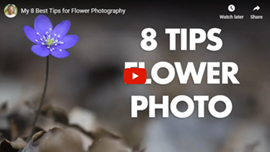Making mistakes is a powerful learning tool, but that statement only holds true if you realize what you’re doing is a mistake. To that end, here are 5 of the most common Photoshop mistakes photographers make.
This useful overview comes from the folks at the Photoshop Tutorials YouTube channel, and if we’re being honest, we’ll admit that we’ve all made every single one of these mistakes at least once… or like… 600 times.
If you want to use Photoshop in the most efficient and professional way possible, avoid these 5 like the plague: |























